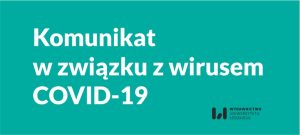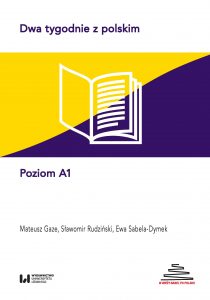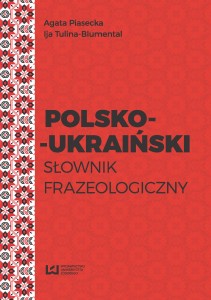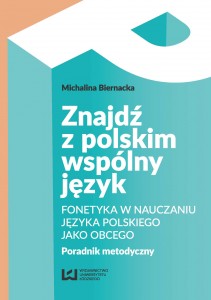Research in Language| Vol. 19, No. 3
Opublikowano: 27 kwietnia 2022
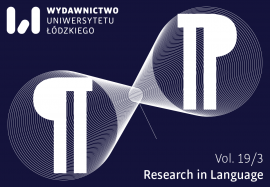
Zapraszamy do lektury nowego numeru czasopisma “Research in Language”. Numer zawiera sześć anglojęzycznych artykułów naukowych prezentujących rezultaty badań empirycznych, które mają istotne zastosowanie dla lingwistyki teoretycznej i stosowanej. Poprzez koncentrację na naturze języka naturalnego i zjawisku komunikacji, artykuły łączą metodologie dyscyplin językoznawczych i pokrewnych, jak np. socjolingwistyka, psycholingwistyka i kognitywistyka.
W numerze:
Contexts and Consequences of Sentence Splitting in Translation (English-French-Czech)
Olga Nádvorníková
The present paper examines the contexts and consequences of sentence splitting in English, Czech and French translated fiction. In the data extracted from a parallel (multilingual) corpus, we analyze first a language-specific context of sentence splitting (sententialization of non-finite verb forms in translations from English and French into Czech), and second, contexts of splitting occurring in all directions of translation. We conclude that sentence boundaries are usually introduced at the point of a sentence entailing the fewest modifications in the target sentence, especially between two coordinate clauses; and that a systematic sentence splitting, deeply modifying the style of the source text, involves the effect of simplification and normalization.
Jānis Veckrācis
A poetic cycle is a specific case of poetic contextualisation and for translators this means additional efforts in identifying the micro- and macro-level network of functional and semantic links. Joseph Brodsky’s cycle A Part of Speech represents a highly conceptual approach and strong integration of each and every poem. In this context the paper briefly outlines different types of micro- and macroscopic approaches to poetry translation. Further practical analysis of some translation issues observed in the respective English and Latvian translations show that decisions of poetry translators are informed by different backgrounds in the author-text-reader relationships. Artistic creativity is certainly present in the translation activity but this does not mean that a completely independent target text is produced.
Incidental Development of Pronunciation Learning Strategies
Anna Jarosz
The studies devoted to the so-called good language learners that emerged in the 1970s (Rubin 1975) reveal that efficient learners fall back on an abundant and highly individualised array of techniques and strategic behaviours related to and employed while learning. The well-known taxonomies by Oxford (1990) and O’Malley and Chamot (1990) gave rise to analyses and investigations in the field of learner autonomy and self-development, also in pronunciation learning/teaching. As has been corroborated by empirical studies (Oxford 2001a; Oxford 2001b; Chamot, 2004) strategy training contributes to the increase in overall proficiency as well as to a number of invaluable benefits such as enhanced motivation, greater self-efficacy, anxiety reduction and more positive attitudes. Although studies dedicated to the relationship between learning strategies and pronunciation are still in their infancy, there are a number of investigations that set the directions for further research and development (Peterson 2000; Pawlak 2008; Pawlak and Oxford 2018).
The paper presents results of a pilot study conducted in a secondary school that aimed at observing how learners develop pronunciation strategies as a result of regular pronunciation input and feedback from the teacher. It addresses a tentative assumption that explicit pronunciation training may contribute to the enhanced strategy use and consequently to better oral performance. Detecting and naming the strategies employed by the learners as well as selecting the most effective ones for more explicit application aided and boosted the learners’ awareness and confidence, which was confirmed by data obtained from questionnaires and from participant observation.
Krešimir Sučević Međeral
Non-Commercial Advertisements: Multimodal Metaphor, Metonymy and Conceptual Blending at Work
Zaiga Ikere, Ilze Oļehnoviča, Solveiga Liepa
Nowadays the omnipresence of advertisements, and the necessity of conscious and subconscious mental interpretation of their hidden messages, can hardly be overlooked. In the present article, the authors attempt to provide additional evidence for the role of multimodal metaphor, metonymy, and conceptual blending in hidden cognitive mechanisms involved in the understanding and/or the correct interpretation of printed non-commercial advertisements and their overall communicative effect thus brought about. The objective is to consider and analyse text-image non-commercial advertisements randomly retrieved from the Internet; the analysis is carried out from the cognitive perspective and aims at discussing the functions of multimodal metaphor, metonymy and conceptual blending as powerful mechanisms exploited for creative purposes in advertising texts and accompanying images, and thus in conveying the central ideas embedded in the adverts.
Maria L. Alekseyeva
This paper explores the essence of lexical units with no direct equivalents in other languages and introduces a bilingual dictionary of a new type. Such a dictionary is built upon a diachronic corpus of parallel translations with due consideration of the principles of present-day lexicography. The suggested diachronic German-Russian glossary of non-equivalent vocabulary – realia – presents the mega-, macro- and microstructure of a diachronic translation dictionary. The glossary is of a holistic character: it can provide information on the ways different realia were translated in various periods and thus reflect the creative role of translation plurality; it can also influence the formation of translating competence, acquisition of translating skills and skills of comparative analysis.
Zapraszamy do lektury!
Komentarze
Ten post dostępny jest także w języku: angielski


